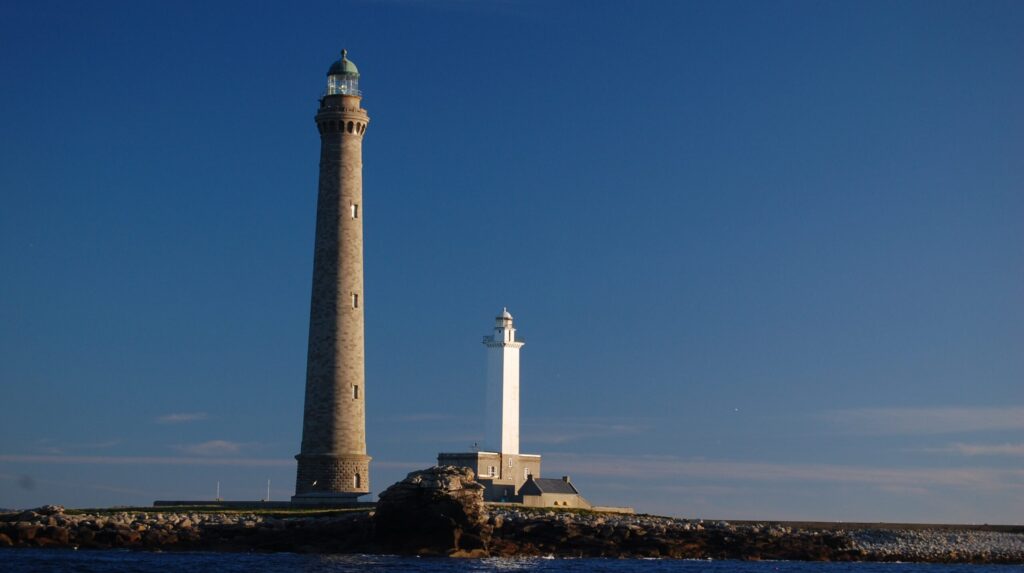Île Vierge marks the south-western limit of the English Channel and is a small islet off the approach to l’Aber Wrac’h, North Finistere. Today, the area is popular for fishing and sailing. It has a long history of maritime industry and commerce along the rocky shores. The coastline is scattered with reefs, small islands, rocky coves and inlets making it a challenging coast for navigation. Founded in 1866, the lifeboat station at l’Aber Wrac’h is one of the oldest in France, and has a significant role to play in maritime safety.

The first lighthouse was built on Île Vierge in 1843 and is just 08’ high (33m). The newer one, built at the turn of the century is reputedly the tallest stone lighthouse in Europe and the tallest ‘traditional’ lighthouse in the world, towering above the earlier one at 271’ (82m) high.



The coast here is rich in ‘wrac’ (seaweed or kelp) which has been an important crop since Neolithic times. The industry which grew up around collecting seaweed for use as a crop fertiliser, fuel, cattle fodder and for human consumption continues today. Napoleon built factories in Brittany to extract iodine from the kelp, following the discovery in 1811 that tincture of iodine was a powerful antiseptic. People who collect seaweed are known as goémoniers’ and many families may have had a ‘four au goémon’ or seaweed oven to burn their ‘crop’ before using or selling it.

You must be logged in to post a comment.